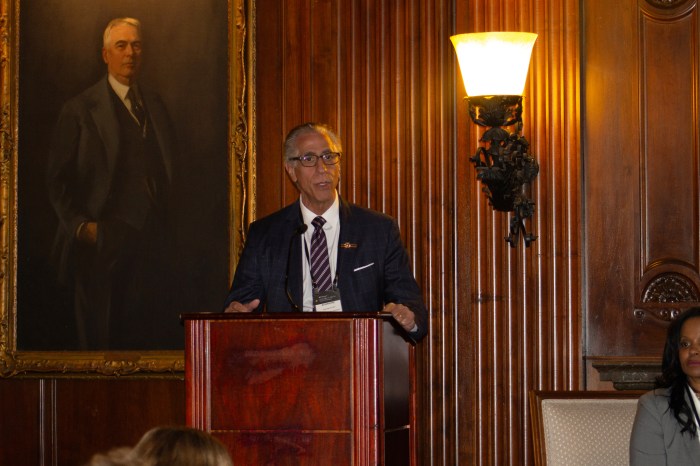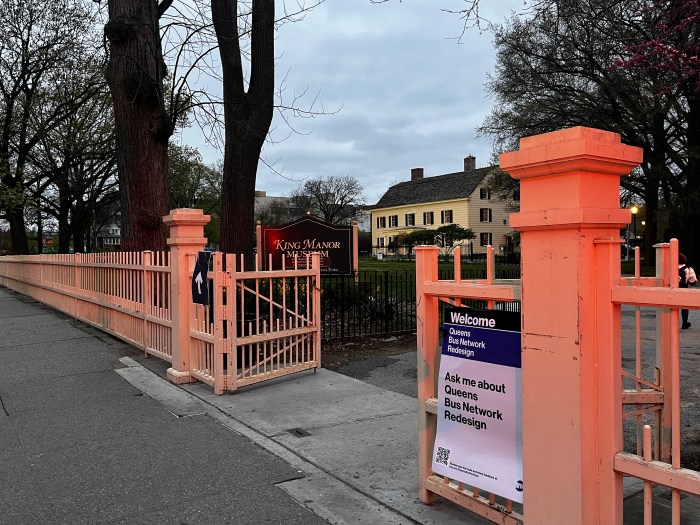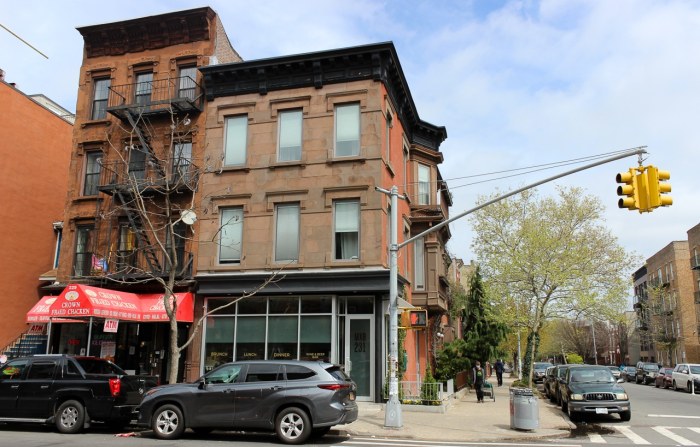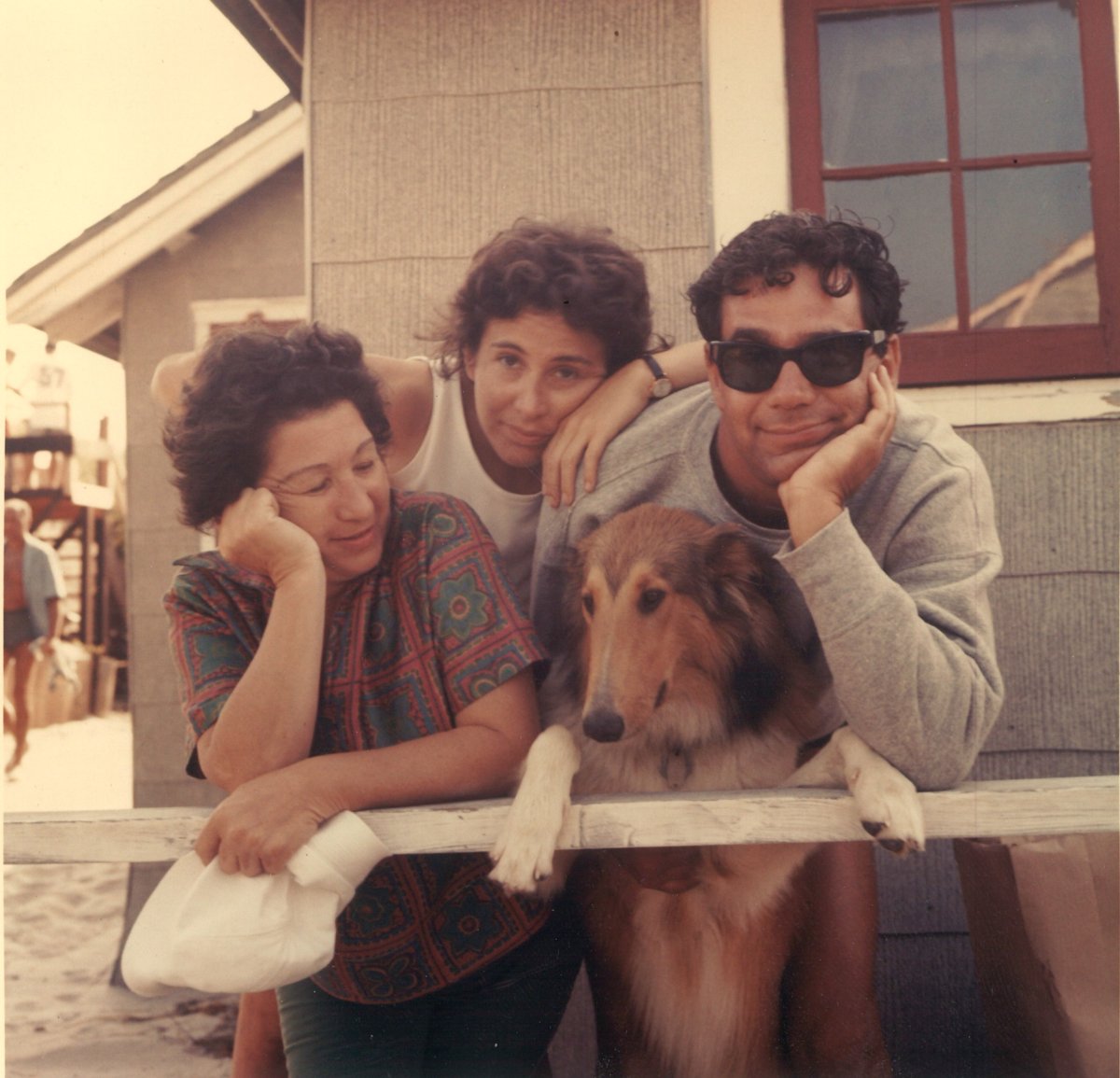
BY MARY REINHOLZ | It’s often tempting to wonder what could have been when a flawed person of immense talent and energy passes on. So it was with the demise of Mark Lane, the activist lawyer, author, conspiracy theorist and decades-long investigator into the assassinations of President John F. Kennedy and the Reverend Martin Luther King, Jr.
Lane died May 10 in Charlottesville, Va., at age 89. He could have been a major political figure, like Bernie Sanders, say several of his friends who knew him as a New York left-wing Democrat back in the day.
They include famed radical feminist Susan Brownmiller, a longtime West Village resident who began a relationship with Lane some 15 years before she published her groundbreaking 1975 book on rape, “Against Our Will.” Another is Stanley Aronowitz, professor in the sociology Ph.D. program at the CUNY Graduate Center, who became Lane’s volunteer campaign manager after Lane was elected to the New York State Assembly in 1960. Both assert that Lane’s career was derailed by political enemies shortly before he began his run for Congress in 1962 in the Democratic primary.
Aronowitz spoke to The Villager shortly after Lane’s fatal heart attack at his home. He characterized him as an ally of the Democratic Party’s reform movement that sought to break away from the Tammany Hall machine-style politics of Carmine de Sapio.
Aronowitz said that Lane, who was arrested June 8, 1961, in Jackson, Miss., after a “freedom ride” to protest Jim Crow travel laws in the segregated South, was pressured out of running again for public office by the threat of exposure in a looming sex scandal.
“He was a noted philanderer, which is not unusual for a politician, but he was more visible,” Aronowitz said of Lane, who was then separated from his first wife, the noted Austrian folk singer and actress Martha Schlamme.
“He got outed by a former girlfriend — she was threatening to publicize pictures” taken of him having an assignation, Aronowitz continued during two telephone conversations. “She was put up to it by his enemies who wanted to shut him up. He was making a lot of trouble — mainly for Republicans.
“Everybody in his campaign knew about it,” Aronowitz added. “It wasn’t a secret. I talked to him about it. Of course, he was upset. He was considering withdrawal from the Assembly. He served out his term.”
Lane then lost his 1962 bid for a congressional seat because of continuing fallout from “the oldest trick in the book,” according to a 1979 article on Lane by Mother Jones magazine.
At the time of his involvement with Lane’s campaigns, Aronowitz was director of the union label department at the Amalgamated Clothing Workers Union. He believes Lane had what it took to become a “national figure as a liberal Democrat. He was not an ordinary liberal,” Aronowitz said. “He was like Bernie Sanders. He challenged the received wisdom.”
Lane was also a muckraker who had grilled Republican Assembly Speaker Joseph Carlino for five hours over a bill that would mandate fallout shelters for New York’s school system, and he called for his resignation. Lane argued that the bill was a conflict of interest: Carlino was on the board of directors of a swimming pool manufacturer that had a subsidiary selling fallout shelters. Carlino survived Lane’s challenge and the fallout shelter bill passed. But by then Lane had made numerous enemies, apparently including Governor Nelson Rockefeller.
Brownmiller, who worked as a volunteer on both of Lane’s campaigns, noted that the photos used to threaten him were “very compromising.” Brownmiller described Lane’s ex-girlfriend, whom she did not identify by name, as a once-wealthy woman “who had run through her inheritance. She was arrested for passing bad checks,” she said.
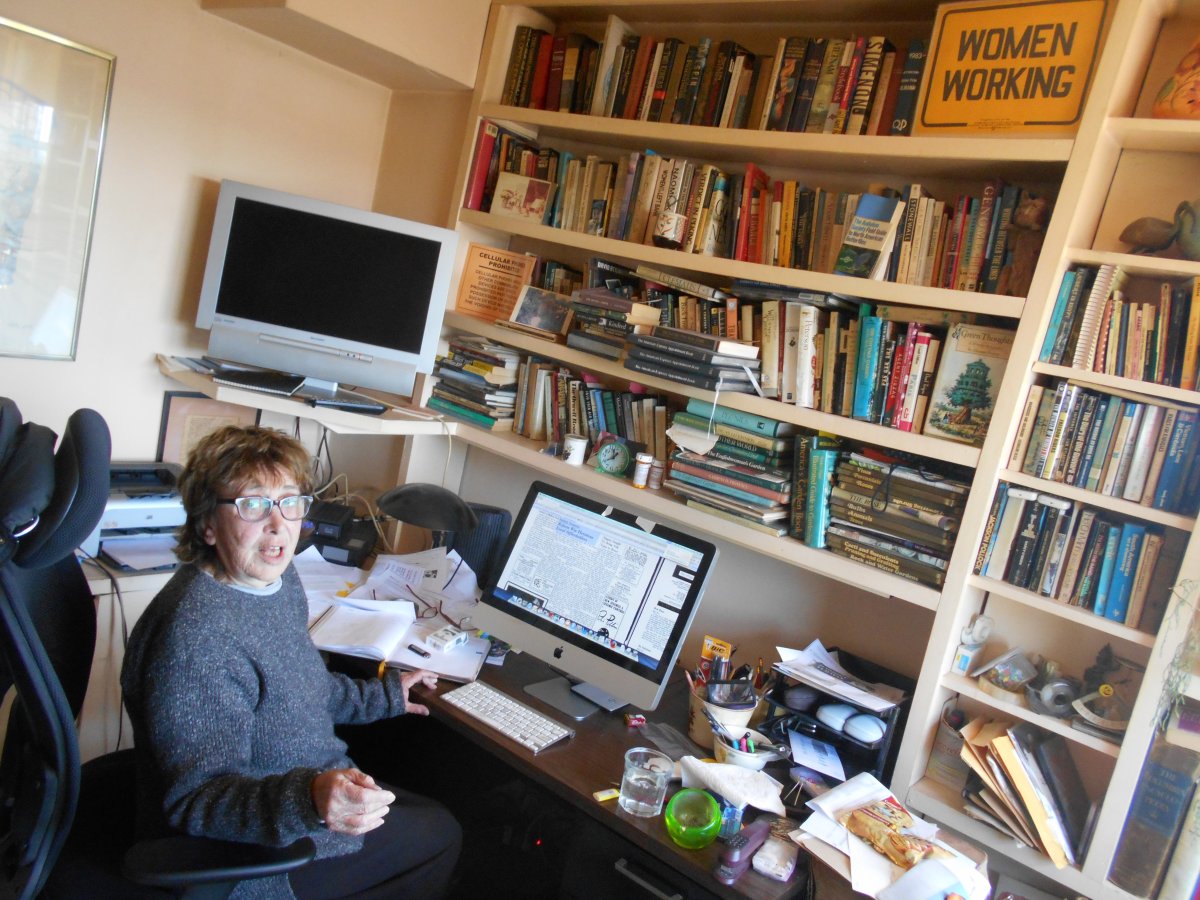
The Mother Jones article claimed a suggestive photo of a man who looked like Lane was reportedly sent by courier to selected reporters and politicians. Lane, the magazine said, questioned the authenticity of the photo, but rumors began. It was a tragic turn of events for a rising political star.
“There was no person on the scene like Mark,” Brownmiller said during interviews at her Jane St. penthouse apartment. She added that many progressives had eyed Lane as the “great white hope” against the Democratic establishment of the era.
Others agree that Lane had been a vibrant presence in the city as a youthful pol whose district covered Yorkville and East Harlem. There he had a law office representing poor blacks and Latinos and founded the East Harlem Reform Democratic Club.
“He was very progressive,” recalled Sarah Kovner, a National Democratic Party Committee member who was active in the Village Independent Democrats club from 1958 to 1964.
“He came out of Yorkville, which had many German tenants, and affordable housing was a big issue,” she said. “He was also very forceful for social justice issues, whether it was civil rights or tenant rights. He worked in East Harlem with District Leader Carlos Rios, who was also very progressive.”
Kovner noted that the Democratic reform movement was backed by Eleanor Roosevelt.
“He was definitely part of it, part of something larger, but he was very effective as a lone wolf,” she said. “He was also involved in labor issues. I remember when District 1199,” the hospital workers union, “was striking. He organized the pickets. One funny story I remember was a picket line outside Manhattan Eye and Ear Hospital. Somebody takes my picture and it turned up in the Communist Daily Worker newspaper. Mark looked at it and said,
‘Show the photo to your mother and tell her it was from the New York Times.’ ”
Kovner said she could not remember why Lane stopped running for elected office at that time. But she noted that he dramatically “changed his focus” after President Kennedy was assassinated on Nov. 22, 1963, in Dallas. Lane fiercely challenged the 1964 Warren Commission Report’s finding that Lee Harvey Oswald was J.F.K.’s lone assassin.
Kovner said the thesis of Lane’s 1966 bestselling book, “Rush to Judgment” — which suggests that Kennedy’s murder was the result of a far-reaching government conspiracy — had been “borne out,” in part, by findings of the House Select Committee on Assassinations in 1979. The completed Warren Commission Report is scheduled for public release in 2017.
Lane was legal counsel for Oswald’s mother after her son was killed by Jack Ruby in the basement of the Dallas police station. Lane also testified before the Warren Commission and wrote some nine other books — four about the assassination — and spawned a cottage industry of conspiracy theorists and amateur detectives. In addition, he produced a 1967 documentary, also called “Rush to Judgment,” and wrote a 1973 feature film, “Executive Action,” starring Burt Lancaster, with formerly blacklisted screenwriter Dalton Trumbo, according to The New York Times.
Along the way, Lane was briefly active in Vietnam Veterans Against the War and the Winter Soldier investigation with the freshly radicalized actress Jane Fonda. He penned a hotly debated 1970 book,
“Conversations With Americans,” alleging widespread atrocities by the U.S. military during the war in Southeast Asia. Lane was frequently derided in the media for hyperbole and inaccuracies. In turn, he both attacked and courted reporters.
In 1974, he joined iconic civil liberties lawyer William Kunstler in successfully defending Native American activists Russell Means and Dennis Banks. The two had been arrested on federal charges in connection with the takeover of the town of Wounded Knee, South Dakota, by 200 Ogala Lakota tribal members from the Pine Ridge Reservation and others involved in the American Indian Movement.
Lane was born in the Bronx on Feb. 24, 1927, but grew up in Brooklyn, the middle child between a sister and a brother. He served in Army intelligence after World War II in Vienna. He earned a law degree at Brooklyn Law School, where he first made his name exposing mistreatment in a Long Island psychiatric facility, according to The Guardian.
His mother, Betty Lane, was a secretary. His father, Harry Lane, was an accountant who worked for a government entity similar to the I.R.S. that was responsible for the arrest of gangster Al Capone, said Steve Jaffe, a Los Angeles P.R. firm owner who worked with Lane on numerous civil and criminal cases since 1966.
Clearly, Lane made a major impact among the people of his generation. Brownmiller announced his passing on her Facebook timeline, noting: “Mark was a crucial person in my life for a few years.” She added: “This was before feminism. My ambition was to latch myself to Mark’s career and be the Evita of Gracie Mansion.”
Now 81, Brownmiller met Lane when she was in her late 20s working as a researcher for Newsweek and living in a cold-water flat in the E. 50s. She had already signed up for liberal causes like the Congress for Racial Equality. Lane was the attorney for CORE Harlem.
“I was drawn to Mark because of the housing issues in my building,” she said. “We had hot water but no heat. Mark had these great campaign posters up saying, ‘Show the Bosses.’ I could have gone to Yorkville where he had an office. But I went to East Harlem. Everybody there was gaga when he came in. And he won!”
Eventually, she said, they become lovers after he made some overtures on a bus trip headed Upstate.
“There was a lobbying effort for fair housing in Albany and I was on the bus when Mark suddenly sat down beside me,” she said. “He started this rap about how he wanted to be a vegetarian but just today he had a hamburger. That was his pickup line. I’m thinking, ‘This is a little wacky.’ But I was thrilled he sat next to me. Before that, I was just one of the people helping in his campaign.”
Their relationship lasted three years. Brownmiller eventually came to believe that Lee Harvey Oswald killed Kennedy, even though she helped Lane write an article soon after Kennedy’s assassination, titled, “Is Oswald Innocent? A Lawyer’s Brief,” that was published in the far-left National Guardian in New York. She said their differences on who killed Kennedy was not the reason why she left Lane and the townhouse in Alphabet City they occasionally shared when he was gearing up for his run for Congress.
“It just wasn’t a good relationship for me,” she said.
Full disclosure: This reporter first met Lane in Los Angeles in 1966 and covered his lecture at a San Fernando Valley college on the J.F.K. assassination for a suburban daily. He ridiculed the claim by the Warren Commission, which was established by Kennedy’s successor Lyndon Baines Johnson, that a single “magic bullet” had passed from the body of President Kennedy and then struck Texas Governor John Connally, who had been riding in the front seat of J.F.K.’s open limousine as it passed through Dealey Plaza in Dallas.
Asked by one of the students if he believed Johnson was involved in Kennedys assassination, Lane replied deadpan: “There’s not a single shred of evidence to suggest that Johnson was part of a conspiracy to kill President Kennedy. Besides, what could possibly be his motivation?”
The audience roared with laughter. The dark-haired and bespectacled Lane and this cub reporter, at the time, struck up a conversation and became friends. He later introduced me to Jane Fonda in New York before we all headed out to a 1970 Black Panther convention in Washington, D.C. Lane lived on Capitol Hill for 20 years, said Steve Jaffe, Lane’s partner in Los Angeles.
Both Lane and Jaffe were deputized by New Orleans District Attorney Jim Garrison in 1967 after Garrison charged a local businessman, Clay Shaw, with conspiring to murder President Kennedy. In less than an hour, a jury acquitted Clay in the case, which later became the subject of the 1991 Oliver Stone film “JFK.”
“Garrison knew the case wouldn’t succeed,” Jaffe said last week. “He wanted a sworn record, a judicial ruling in a court of law, and he got it. The judge during the trial ruled that the Warren Commission [Report] was inadmissible because it was speculative and false,” he said.
In 1978, Lane was hired by self-styled religious leader Jim Jones to represent his Peoples Temple in Jonestown, Guyana. A year later, after California Congressmember Leo J. Ryan was killed there by several of Jones’s paranoic followers, Jones and 900 of his cult members committed mass suicide by drinking cyanide-laced Kool Aid. Lane was able to escape into the jungle.
During an interview with Lane in 1970, I asked him to define his political leanings. “I’m a radical who is trying to be a revolutionary,” he replied.
Aronowitz concurred with this description of a complicated man who became a towering figure in the 1960s counterculture.
“He was a leftie liberal,” Aronowitz said. “I think he wanted to change the conversation.”
Lane is survived by his third wife, the former Patricia Erdner; three daughters, Anne Marie Lane, Christina Bel and Vita O’Shea, and four grandchildren, according to The New York Times.














